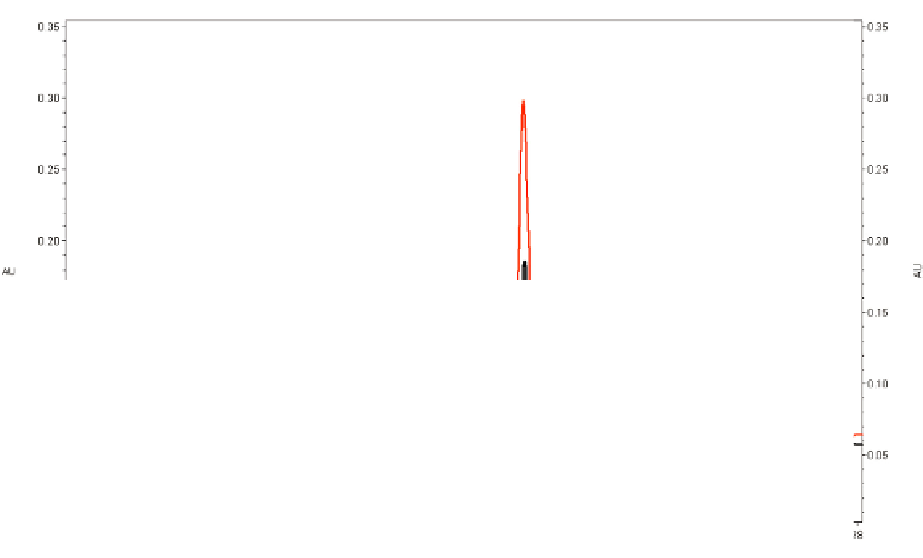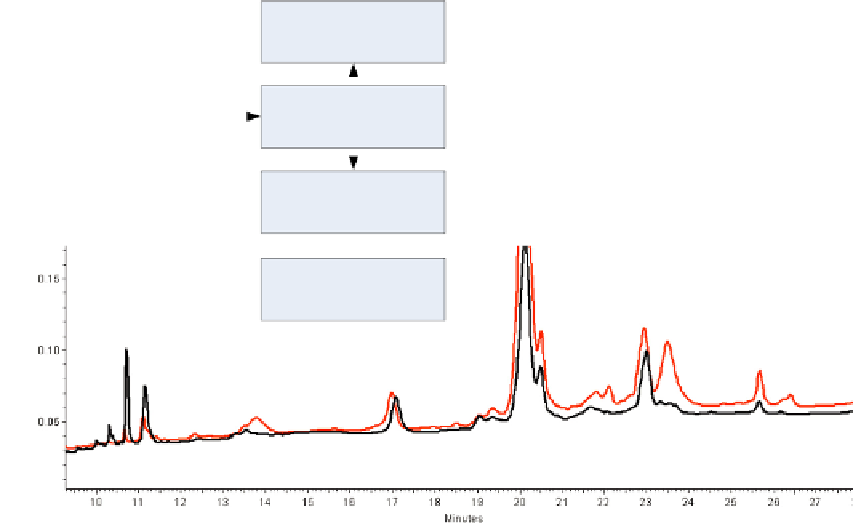Biology Reference
In-Depth Information
mode MALISA methods, and (6) new antibodies
are used in each analysis, allowing the use of
labile antibodies.
An example of multiplexed glycoprotein anal-
ysis is shown in
Figure 3
. Glycoproteins bearing
the sialyl Lewis x (s-Le
x
) antigen were selected
from human blood plasma, in this case using
an immunosorbent with immobilized anti-s-Le
x
antibody. The chromatogram in
Figure 3
was
obtained by releasing captured glycoproteins
from the immunosorbent and subjecting them
to reversed-phase chromatography (RPC) as
illustrated. The red tracing is from a breast
cancer patient and that in black is from a control
subject. As seen in the illustration, the af
RPC-MS/MS of trypsin fragments. Approxi-
mately one-third of the proteins selected from
plasma by an anti-s-Le
x
immunosorbent were
elevated in breast cancer patients.
With forms of MALISA in which antibodies
are immobilized, the mode of immobilization
can impact the analysis. One method is by cova-
lent attachment of the antibody to a surface
through any of multiple well-known methods.
A second is by adsorbing the antibody onto
a surface precoated with an antibody af
nity
selector, generally protein A, protein G, or an
anti-IgG. The weakness of this approach is that
the adsorbed antibody can leach during use.
This problem is circumvented in the third
method of immobilization by crosslinking the
adsorbed antibody to the surface. This latter
nity-
selected glycoprotein fraction can also be trypsin
digested and the parent proteins identi
ed by
RPC or intact
proteins
14
anti - sLe
x
plasma
sample
selection
trypsin digestion
peptide ID by
RPC -MS /MS
15
17
3
18
20
4
11
16
19
21
7
13
1
2
12
8
5 6
FIGURE 3
Multiplexed affinity selection of Lewis x antigen
e
bearing glycoproteins from human plasma by RPC. Subse-
quent to af
nity selection, glycoproteins were released from the immunosorbent with an acidic mobile phase and subjected to
RPC. The red chromatogram was derived from a breast cancer patient blood sample and that in black was taken from the
sample of a control subject.












Search WWH ::

Custom Search